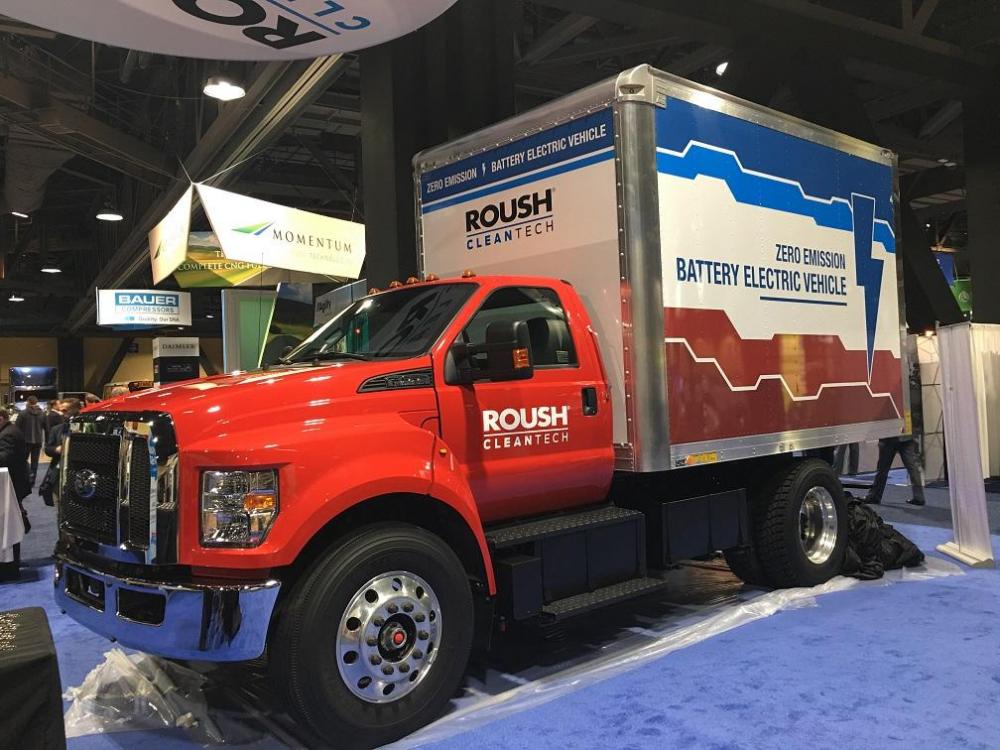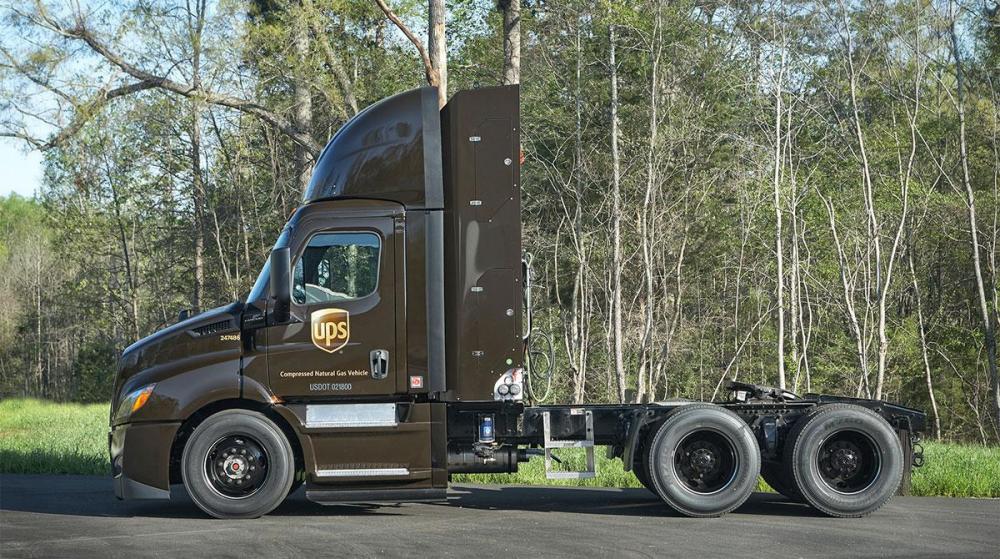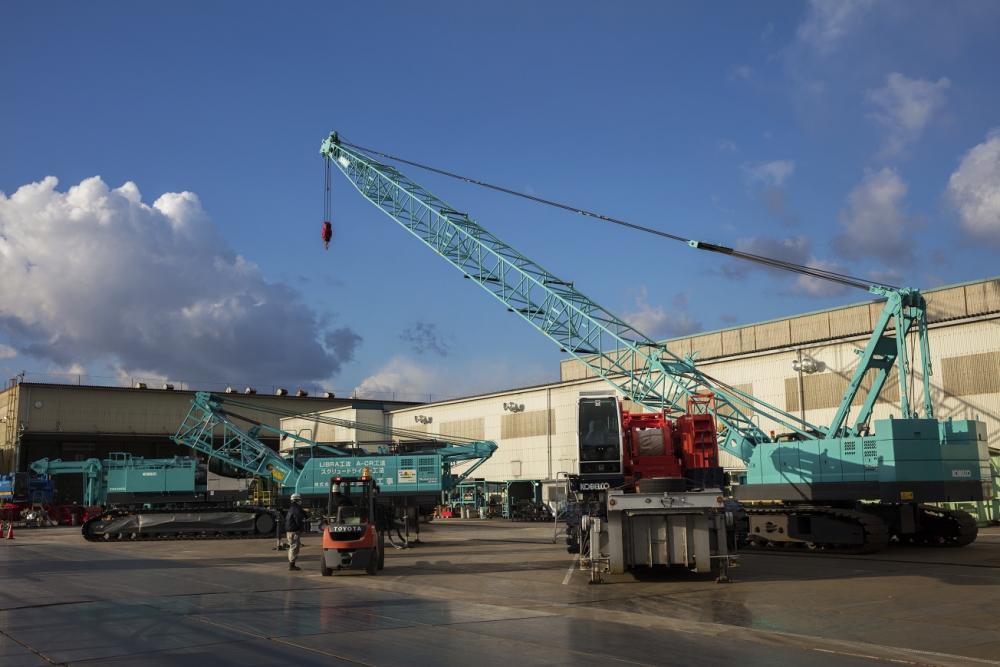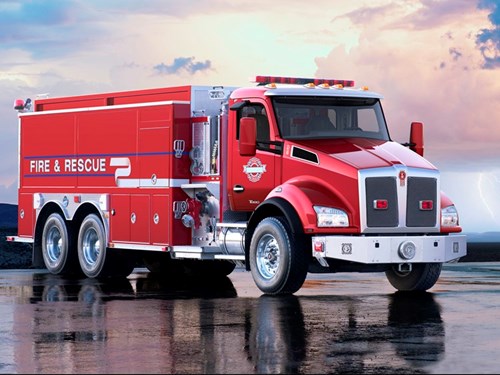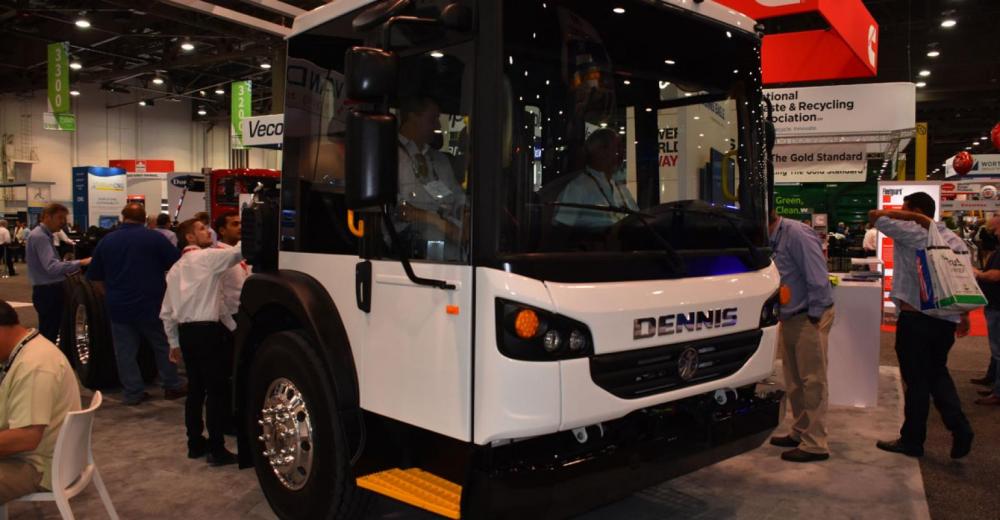
kscarbel2
Moderator-
Posts
18,886 -
Joined
-
Days Won
114
Content Type
Profiles
Forums
Gallery
Events
Blogs
BMT Wiki
Collections
Store
Everything posted by kscarbel2
-
Bloomberg / February 27, 2018 CHICAGO -- FreightCar America, Inc. announced today that it has entered into an asset purchase agreement with Navistar, Inc. (“Navistar”) to acquire substantially all of Navistar’s operating assets associated with its railcar operations at the Shoals facility in Cherokee, Alabama. The transaction is expected to close on or around February 28, 2018 subject to the conditions set forth in the asset purchase agreement. “This acquisition will allow us to now control our own destiny and benefit from the full economics of all future railcars built within the Shoals facility,” said Jim Meyer, President and Chief Executive Officer. “This is good news for our customers, our brand, our products, our people and the Shoals community. I want to thank Navistar for the prior relationship and the Retirement Systems of Alabama, the owners of the facility, for its support in this transaction.” Meyer concluded, “We are making important investments in people, technology, equipment and infrastructure to enhance our state-of-the-art facility and world-class workforce, which will increase our operational efficiencies and create long-term value for our shareholders. The opportunities afforded to us upon completion of the acquisition, together with the organizational changes and manufacturing best practices that we have already begun to implement, will significantly strengthen our long-term competitive positioning, reduce our costs and allow us to be more responsive to customer needs.” FreightCar has subleased a substantial portion of the Shoals facility since 2013. As a result of this transaction, FreightCar will become the sole tenant of the approximately 2.2 million square foot facility, which was purpose-built for the manufacture and repair of railcars. Additionally, FreightCar will be offering employment opportunities to the majority of Navistar’s approximately 200 employees on site. FreightCar will purchase select operating equipment and inventory at the Shoals facility, and receive a one-time up-front payment to cover future operating costs including rent payments at the facility. Net proceeds to FreightCar will be approximately $3 million at closing. About FreightCar America, Inc. FreightCar America, Inc. manufactures a wide range of railroad freight cars, supplies railcar parts and leases freight cars through its JAIX Leasing Company subsidiary. FreightCar America designs and builds high-quality railcars, including coal cars, bulk commodity cars, covered hopper cars, intermodal and non-intermodal flat cars, mill gondola cars, coil steel cars and boxcars. It is headquartered in Chicago, Illinois and has facilities in the following locations: Cherokee, Alabama; Danville, Illinois; Grand Island, Nebraska; Johnstown, Pennsylvania; Roanoke, Virginia; and Shanghai, People’s Republic of China. More information about FreightCar America is available on its website at www.freightcaramerica.com.
-
Heavy Duty Trucking (HDT) / May 1, 2018 ROUSH CleanTech will offer a Ford F-650 medium-duty truck that's powered solely by a battery-electric powertrain, the vehicle modifier has announced. With the move, the company expands its alternative fuel offerings to include zero-emission electric vehicles. ROUSH CleanTech has been converting trucks and vans to run on alternative fuels such as propane autogas and compressed natural gas. Built on the Ford F-650 chassis, ROUSH CleanTech’s new fully electric vehicles will have a lithium ion battery system of up to 225 kilowatt hours and 700 volts. Depending on the vehicle’s GVWR, the average range will be up to 120 miles with a top speed of 75 mph. The AC permanent magnet motor will have a continuous-rated power of 150 kilowatts (200 horsepower), with a peak-rated power of 250 kilowatts (335 horsepower). “An electric battery option for medium-duty trucks and buses is a great fit as there is increasing demand in this gross vehicle weight range with very few OEM solutions,” said Todd Mouw, president of ROUSH CleanTech. “This builds from our robust foundation already in place at ROUSH CleanTech that supports more than 1,200 customers and 19,000 propane and natural gas units on the road.” .
-
Transport Topics / May 1, 2018 LONG BEACH, Calif. — Daimler Trucks North America presented two new Freightliner Cascadia trucks fueled on compressed natural gas as examples of its further expansion into alternative-fuel options. One of the new Cascadia CNG vehicles shown here at the ACT Expo during April 3-May 3 was developed in collaboration with UPS Inc. The new Cascadia day cab is equipped with a Cummins Westport ISX12N Near Zero NOx natural gas engine and Eaton Fuller Advantage Series automated manual transmission, which, when combined with the model’s aerodynamic design, can result in fuel-efficiency gains of up to 3% compared with similarly spec’d original Cascadia CNG truck models, according to the Portland-Ore.-based truck maker. The ISX12N engine meets the California Air Resources Board Low NOx standard of 0.02 gram per brake horsepower-hour — a 90% reduction from engines operating at current U.S. Environmental Protection Agency NOx limit of 0.2 gram standard. “By partnering with companies like UPS to pilot innovations such as the new Cascadia CNG truck, we can continuously evaluate and enhance our products,” Kelly Gedert, director of product marketing for Freightliner Trucks and Detroit Components, said in a statement. “Our proven experience in developing alternative-fuel technologies for applications ranging from longhauls to vocational jobs demonstrates our commitment to environmentally sustainable solutions that increase productivity and efficiency for our customers,” Gedert said. The DTNA booth also featured the medium-duty Freightliner M2 112 equipped with a Cummins Westport L9N Near Zero NOx natural gas engine, the propane-autogas S2G chassis from Freightliner Custom Chassis Corp. and the Thomas Saf-T-Liner C2 all-electric school bus. .
-
Edsel Ford II says Ford board may take up train station plan May 10 Automotive News / April 30, 2018 DETROIT -- Ford Motor Co. board member Edsel B. Ford II said Monday that the automaker's board of directors "has been briefed" on fast-moving plans to purchase the long-vacant Michigan Central Station as part of a "big redevelopment" of downtown Detroit's Corktown neighborhood. Ford's comments mark the first time a member of the Ford family or any company official has confirmed the automaker is pursuing purchase of the train station, which Crain's Detroit Business first reported March 19. CDB is an affiliate of Automotive News. Ford, the great-grandson of company founder Henry Ford, commented on the automaker’s efforts to establish a Detroit campus to develop electric and autonomous vehicles following a ceremony at the city’s Campus Martius park downtown. Edsel Ford II was honored Monday for his work with the Detroit 300 Conservancy group that was instrumental in creating Campus Martius. The Ford Motor Co. board plans to discuss the train station deal at its May 10 meeting and could take action on the major real estate acquisition proposal, Edsel Ford II said. "It doesn't need a vote, but it requires buy-in," Ford said. Internally at the automaker, Executive Chairman Bill Ford has been said to be driving the push for the company to re-establish a major presence in Detroit some two decades after the automaker's last employees left the Renaissance Center, whose construction was led by Edsel Ford II's father, Henry Ford II. "Bill's excited about it, and I'm excited about it," Edsel Ford II said, calling it a potential "big redevelopment of southwest Detroit." Ford cautioned there's no done deal yet to purchase the train station from the family of billionaire trucking mogul Manual "Matty" Moroun. "There's T's to cross and i's to dot and nothing is -- as you know -- officially announced yet," Ford told reporters. The push to establish a campus in Corktown beyond the building Ford purchased in December at the corner of Michigan Avenue and Rosa Parks Boulevard is driven by a desire to "cluster" the autonomous and electric vehicle units in one spot, Ford said. "I think that's what's really driving it," he said. The Michigan Central Station has sat vacant since the last Amtrak train left the station in January 1988 and become an internationally recognized symbol of the city’s late 20th century decline. The Morouns have said they spent $8 million installing 1,100 new windows in the building in 2015. But there’s an unknown cost of rehabilitating the station and its 13-floor office tower atop of the 110,000-square-foot first-floor concourse that sat open to the elements for years -- a challenge the Ford scion acknowledged Monday. "I don’t know how long it’s going to take to redevelop all of that if we did buy the building," Edsel Ford II told reporters. "But it seems to me that the building is in somewhat disrepair, so we would have to spend some time and effort and redo it all."
-
Rough ramp-up for Ram Larry Vellequette, Automotive News / April 30, 2018 DETROIT — Quality and supply problems plaguing the redesigned Ram 1500 pickup's launch are not enough to make Fiat Chrysler Automobiles CEO Sergio Marchionne spend the night on the factory floor, a la Tesla's Elon Musk. "I'm not sleeping on the floor," Marchionne said during the company's earnings call last week. "You need to be Elon's age to do that. I'm too old for that crap." But Marchionne, 65, is not above spending more than $300 million to fix the problems that have put the 2019 truck's ramp-up well behind schedule. Marchionne conceded that the pickup's launch — key to FCA's strategy to hit aggressive 2018 financial targets — has been fraught with problems. He said FCA's Sterling Heights Assembly plant, which began building the truck in mid-January, is "probably running today at 60 percent of cycle. That's not where we need to be. We allowed enough time in 2017 to get that installation up, but it's proven to be challenging." Supplier and internal sources at the plant said late last week that the factory was building about 1,000 trucks per day toward a run rate of 1,400 per day. The plant is operating two 10-hour shifts per day, seven days a week, to get the production rate up to speed, the sources said. A revised production calendar from March shared with Automotive News indicates that FCA plans to run the plant every weekend and every holiday through Labor Day to get production of the new-generation Ram up to speed. FCA dealers have begun receiving the 2019 pickups, but they have been limited to versions with the 5.7-liter V-8 engine, which are rated at the same 15 mpg city/22 highway/17 combined fuel economy as the previous-generation truck. As of late last week, neither the 3.6-liter V-6 variant nor the 5.7-liter mild hybrid variant, both with a belt-drive generator and 48-volt battery, had received a fuel economy rating from regulators. Marchionne told analysts that while the automaker is working out the kinks in the launch, it is relying on the previous-generation Ram 1500, which will continue to be built in the Warren Truck Assembly plant about 10 miles from Sterling Heights at least through 2018 and possibly into 2019. Still, sales of the previous-generation truck have not been stellar. In fact, FCA this month is offering incentives to U.S. dealers who add new trucks to their service loaner fleets and count them as sales. In March, U.S. sales of the Ram pickup fell 11 percent, and volume is down 13 percent through the first three months. Sales of the Ford F series increased 7 percent last month and are up 4.3 percent through March. Chevrolet Silverado sales rose 24 percent in March and are up 5.5 percent for the year. A union source in the plant told Automotive News that suppliers are having difficulty "keeping up" with building two versions of the Ram 1500 simultaneously. The source said the Sterling Heights plant was still undergoing construction, even as workers built new Ram 1500s, and that some workers still lacked proper training. The source, who spoke on condition of anonymity, said more than 2,500 2019 Ram 1500s were in holding areas near the plant awaiting repairs before they could be shipped. A supplier source indicated that the problem is electrical, but did not elaborate. Marchionne has said FCA needs the launches of the 2019 Ram 1500 and redesigned Jeep Wrangler to go smoothly to help the company achieve its financial goals for 2018, his last year as CEO. He and CFO Richard Palmer confirmed the company's 2018 guidance last week that it would end the year with more than 8.7 billion euros ($10.5 billlion) in adjusted earnings before interest and taxes, and with more cash on hand than debt for the first time since Fiat took control of bankrupt Chrysler in 2009. In the first quarter, FCA posted adjusted earnings of 1.61 billion euros ($1.96 billion), an increase of 5 percent, and cut its debt in the quarter by $1.6 billion.
-
Look at the 313GC fuel pump assembly breakdown at your Mack brand distributor.
-
. .
-
.
-
Scania Group Press Release / April 27, 2018 Swedish owner-driver Magnus Persson has just invested in a new Scania R 410. Although the truck comes equipped with the latest technology, Persson will not be fully satisfied until he’s added a state-of-the-art hi-fi system. So, before heading off to the bodybuilder, he makes a detour to his "sound guy." .
-
Scania Group Press Release / April 26, 2018 Kobelco’s huge new cranes reach farther and lift loads of 300 tonnes or more. Scania engines provide these massive machines with the power they need. Our world is growing ever larger. Taller buildings, wider bridges, more colossal goods. To handle them we need bigger and bigger equipment. For Kobelco Construction Machinery Co., the size revolution has led to its own challenge. After years of dominance in the market for small-to-mid-sized cranes with lifting capacity under 250 tonnes, Japan’s leading crane manufacturer is now staking a claim among the heavyweights. In January, the company shipped its largest-ever multi-purpose crane, a giant crawler with a maximum lifting capacity of 300 tonnes as standard (350 tonnes in the super heavy lift, SHL, specification). That’s a load moment, or point of overturning, that is 40–60 percent higher than that of a 250-tonne crane. It is also enough to rival machines from the 400 to 500-tonne class, thanks in part to the torque and power efficiency of Scania’s 13-litre, six-cylinder, 450 hp engine. “Almost 90 percent of mobile cranes sold worldwide are in the 250-tonne class and under, where we’ve been very strong, but the last 10 percent brings in almost as much revenue,” says Koichi Shimomura, senior manager in the crane engineering department of Kobelco Construction Machinery. “That top 10 percent requires lots of customisation,” something that results in higher prices and sales. Having spent years perfecting hydraulics, cabins and lifting technologies in its smaller devices, Kobelco felt it was time to apply them to the upper echelons of the crane world. The company decided to focus its new model, designed from scratch, overseas – on the North American market, as well as on South-East Asia and Europe. Japan, which accounts for 40 percent of Kobelco’s crane sales, will have to wait awhile for the new offering. “We are strong in Japan, which also has quite different needs,” says Shimomura. Now, the firm wants to make a bigger impact globally. Making the jump in weight is by no means easy. A team of 10 requires two weeks to assemble the new CK3300G model, which boasts a boom length of 90 metres (295 feet). The crane has to be delivered to clients in more than 25 pieces, none of which must exceed a width of three metres (10 feet) for the sake of easy transportation. What’s more, all work has to be done by hand, without recourse to an assembly line or the specialist welding robots that Kobelco employs for smaller devices. “The size of it… it just wouldn’t fit on an assembly line right now,” Shimomura says as we tour a Kobelco Construction Machinery factory to the west of Kobe City. The cavernous facility, which employs 500 factory staff, reverberates with a cacophony of thuds, grinds and drilling. We walk past a safety centre outfitted with its own maneki-neko figurine, a golden lucky cat associated with fortune. In the separate area for large-crane assembly, men in brown aprons fix pipes inside a lattice tower, ready for welding. Rows of wrenches and spanners hang neatly at designated desks. So far, Kobelco has shipped two of its new cranes to a rental firm and a dealership in Texas. A further two will be delivered to Indonesia during the first half of this year. It is the first time that Kobelco has used Scania’s engines, and the company hopes that with Scania’s help the new crane will become the ultimate all-rounder in its category, used as much for the building of bridges and the hammering of pylons into the ground, as for the moving of materials around construction sites. Scania is confident that it can help Kobelco meet its needs. “Working with a crane demands a lot of precision and a lot of power, so good driveability and good response are vital, as are smooth and consistent power and torque,” explains explains Haruyuki “Cookie-san” Mayama, Engine Sales Manager for Scania Engines, Japan. “Reliability is also key, because in the construction industry cranes are very often used in very expensive, one-time contract jobs that have a very tight time schedule; in essence, time is money. However, we believe that Scania’s 13-litre, six-cylinder, 450 hp engine can certainly provide what’s required.” So far, Koichi Shimomura and Kobelco agree. “We have faith in this device… and we are not done with the 300-tonne class. We see that Scania has the vision to go higher in weight capabilities,” says Shimomura. Both Kobelco and Scania are known for reliability, which will be key in the follow-up after sales. Given Scania’s responsiveness so far and the ability of the two to communicate easily, Shimomura says he feels this is the start of a great partnership. “It’s our first time working with Scania. But, I already feel we can be partners, and we need to move together to make this a success.” The engine Scania’s 13-litre, six-cylinder, 450 hp engine is powering the new CK3300G model crane, which boasts a boom length of 90 metres (295 feet). “The engine has good and smooth power and torque. An excellent driveability and response is needed for accurate, precise crane work. The reliability is crucial since construction jobs are on very tight schedules,” says Haruyuki “Cookie-san” Mayama. The company Kobelco is a global company manufacturing excavators and cranes. .
-
Renault Trucks Press Release / April 25, 2018 Renault Trucks C is the lightest rigid truck on the market for transporting concrete. Its light tare weight means exceptional payload and improved productivity for time-limited deliveries such as transporting ready-mixed concrete from the plant to the site. An increased approach angle, ground clearance and reduced turning radius make Renault Trucks C the best truck to handle essential deliveries. Renault Trucks C delivers more for less. .
-
-
Mercedes-Benz's Econic refuse truck comes to North America
kscarbel2 replied to kscarbel2's topic in Trucking News
I like Dennis Eagle. They're owned by Terberg RosRoca. http://www.terbergrosroca.com/en/products/ -
Mercedes-Benz's Econic refuse truck comes to North America
kscarbel2 replied to kscarbel2's topic in Trucking News
Here's the European market Econic. . . -
Western Star Press Release / April 27, 2018 .
-
Kenworth Truck Co. Press Release / April 25, 2018 Kenworth announced today that it will offer its new National Fire Protection Association (NFPA) prep kit for the Kenworth T680 on-highway flagship and Kenworth T880 vocational leader. The announcement is in conjunction with this week’s 91st annual FDIC (Fire Department Instructor’s Conference) International show, the world’s largest firefighter training and conference and exhibition, being held in Indianapolis. The kit includes the vehicle data recorder (VDR) pre-wire, seat occupancy sensors, height-limited seats, NFPA floor mat, and ingress/egress packages that all meet NFPA requirements. The T680 and T880 both feature Kenworth’s 2.1-meter wide cab, which has been validated to meet NFPA cab strength guidelines. .
-
International Trucks Press Release / April 26, 2018 . . .
-
Mercedes-Benz's Econic refuse truck comes to North America
kscarbel2 replied to kscarbel2's topic in Trucking News
-
-
Today is April 28
kscarbel2 replied to j hancock's topic in Antique and Classic Mack Trucks General Discussion
How is John DeChant? Great guy. -
Serial number tag on door jamb illegible
kscarbel2 replied to 217 In motion's question in Mack Truck Q & A
Take a picture. -
Dennis Eagle Launches ProView Refuse Truck in U.S.
kscarbel2 replied to kscarbel2's topic in Trucking News
Dennis Eagle’s ProView cab premieres Trailer-Body Builders / April 27, 2018 LAS VEGAS. There’s a new refuse truck builder in town. New to North America, anyway. Dennis Eagle Inc. – a subsidiary of leading U.K. garbage and recycling collection vehicle manufacturer Dennis Eagle – launched the new ProView high-performance cab, designed to meet the needs of customers in the U.S. and Canada, at this year’s WasteExpo. “While the Elite chassis with ProView cab has been engineered specifically for customers in the U.S. and Canada, it is based on an established design that has a proven track record as one of the safest and most reliable cabs in the U.K. and Europe,” said Robert Mecchi, president of Dennis Eagle Inc. “First introduced in the 1990s, the Elite cab has undergone many upgrades and developments since then. With unrivalled visibility, access and focus on safety, as well as comfort, and a proven U.S. drivetrain, it is what the market has been asking for.” The first models went on trial with customers earlier this year and have been “extremely well received,” Mecchi added, and more are at various body builders awaiting delivery. Dennis Eagle will start production in early 2019. Offering the best and safest in-cab visibility in class, the Dennis Eagle ProView is built to withstand the toughest conditions and features an ergonomic design specifically engineered to provide maximum comfort for drivers and crews, the company said. Narrowed ‘A’ and ‘B’ pillars aid peripheral vision to give an unobscured view and prevent traffic disappearing from sight, while longer, panoramic windows provide enhanced over-the-shoulder visibility at junctions. The cab is also positioned closer to the road, giving drivers a better sense of the vehicle’s proportions and more visibility of cyclists and pedestrians. At around 17” from street to step, the ProView will be one of the lowest entry cabs on the market, with a flat, unobstructed walk-through design helping to reduce leg and back strain for operators, according to Dennis Eagle. Fewer dash-mounted switches and a telescopic, tilting steering wheel with unrivalled steering radius make for simple operation, while noise levels below 70db(A) will further enhance operator and crew comfort. Initially available in a 6x4 configuration, the ProView is available with dual control and left-hand steer options in diesel, and we will also be offering CNG variants, with both 3000 or optional 4000 series Allison gearbox. .
BigMackTrucks.com
BigMackTrucks.com is a support forum for antique, classic and modern Mack Trucks! The forum is owned and maintained by Watt's Truck Center, Inc. an independent, full service Mack dealer. The forums are not affiliated with Mack Trucks, Inc.
Our Vendors and Advertisers
Thank you for your support!


